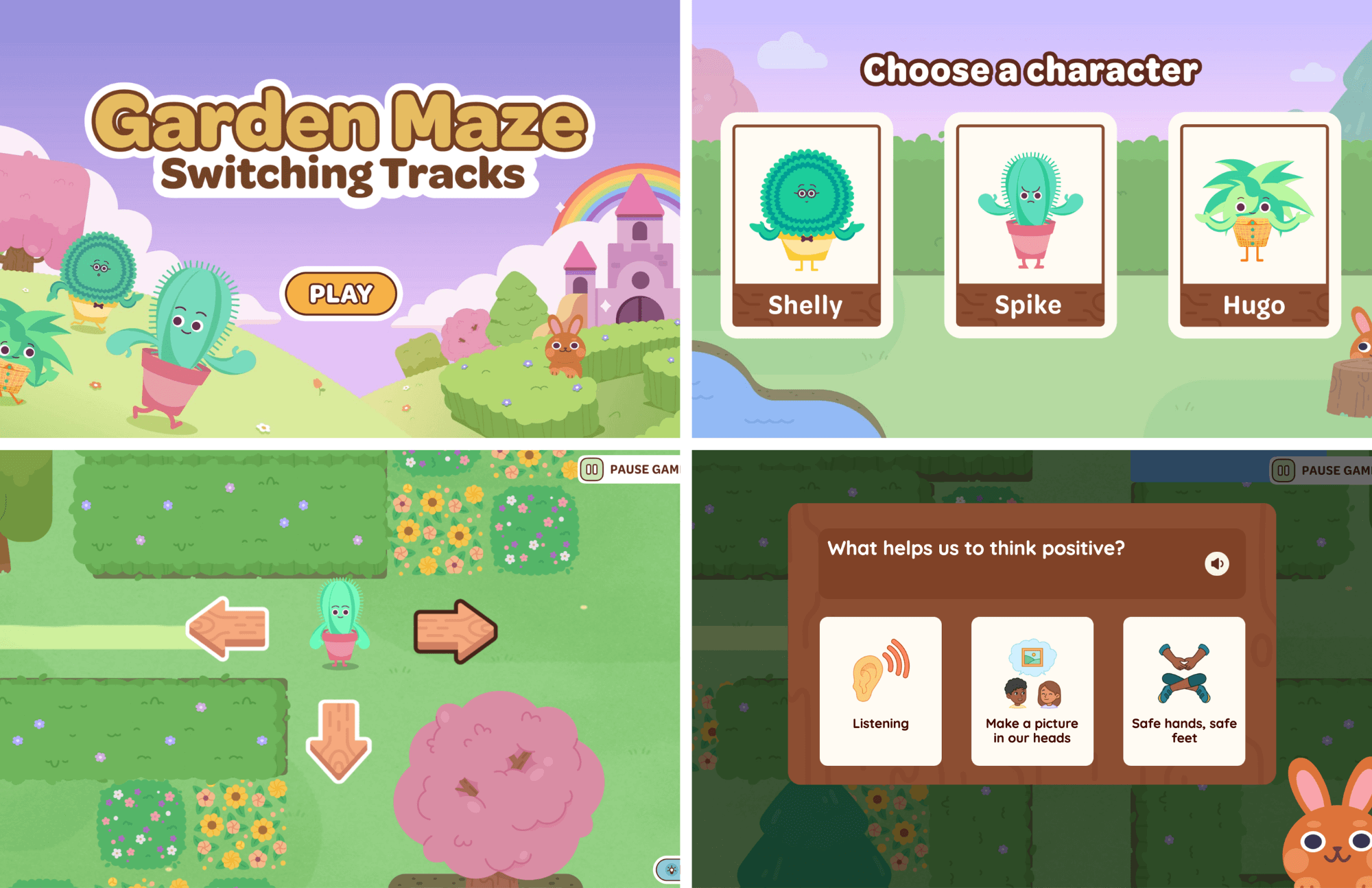
Introduction
Teaching young children self-regulation is an essential component of early childhood education. Educators who know how to help a child regulate their emotions enable children to manage their feelings, behavior, and body movements, setting the stage for successful learning and social interactions. One key aspect of self-regulation is the ability to “switch tracks” or change plans when faced with new situations. In this blog post, you’ll find a detailed lesson plan for pre-k students that teaches how to switch tracks, featuring the interactive game, “Garden Maze: Switching Tracks.”
How to Help a Child Regulate Their Emotions with Switching Tracks
Switching tracks, or cognitive flexibility, is crucial for young children as it helps them adapt to new circumstances, solve problems, and manage their emotions. This skill is particularly important in early childhood because children frequently encounter new experiences and challenges. By learning to switch tracks effectively, children can develop resilience, improve their social skills, and enhance their ability to focus and complete tasks.
Lesson Plan for Pre-K Students: Regulating Emotions and Switching Tracks
Objective
By the end of this lesson, pre-k students will understand the concept of switching tracks and practice their skills with the interactive game, Garden Maze: Switching Tracks.
Materials Needed
-
Interactive game: Garden Maze: Switching Tracks
- Computers or tablets
-
Whiteboard and markers
-
Picture cards illustrating different scenarios (e.g., playing with toys, drawing, having snack time)
-
Stickers or small rewards
Introduction (5 min)
Mindful Moment: Start with a short mindfulness or focusing activity, such as a deep breathing exercise or a calming song, to help students settle in and prepare for learning.
Explanation of Switching Tracks (10 minutes)
Define Switching Tracks: Explain to students what it means to switch tracks. Use simple language and relate it to their daily experiences, like changing activities or plans. For example, you can say, “Sometimes, we might be playing with blocks, but then it’s time for snack. We need to switch from playing to eating. That’s called switching tracks.”
Visual Aids: Use picture cards or draw simple illustrations on the whiteboard to show different scenarios where switching tracks might happen. This visual support can help students understand the concept better. For instance, display a picture of children playing followed by a picture of a snack time setting to illustrate switching activities.
Link to Emotions: Explain how switching tracks is connected to regulating emotions. For example, say, “When we switch tracks, it can sometimes make us feel upset or frustrated because we have to stop what we are enjoying. But learning to switch tracks helps us stay calm and be flexible.” This connection helps students understand the emotional aspect of self-regulation.
Interactive Activity – Garden Maze: Switching Tracks (20 minutes)
Game Introduction: Introduce the Garden Maze: Switching Tracks game and explain how it helps practice switching plans.
Game Play: Allow students to play the game in turns or in teams, encouraging them to answer questions that reinforce the concept of switching tracks.
Unlock the “Garden Maze: Switching Tracks” Game
by signing up for a free trial today – no credit card required!
Access the Activity Here!
Instant access to thousands of no-prep social skills activities, over 800+ video lessons, and engaging games designed to enhance learning and development.
Reflection and Practice (10 minutes)
Scenario Cards: Show picture cards with different situations and discuss how students might need to switch plans.
Role-play: Engage students in role-playing scenarios where they practice switching tracks based on unexpected changes.
Lesson Wrap Up (5 minutes)
Review and Summarize: Summarize the lesson by reviewing what switching tracks means and how they practiced it today.
Closure: End with a positive reinforcement activity, such as a brief song or a simple group cheer, to celebrate their learning and efforts.
Conclusion
Teaching pre-kindergarten students how to switch tracks is a valuable part of helping them regulate their emotions and adapt to new situations. By focusing on how to help a child regulate their emotions, we can integrate engaging activities and games like Garden Maze: Switching Tracks to make the learning process both enjoyable and effective. As children practice switching tracks, they develop greater cognitive flexibility, resilience, and emotional regulation.
Sample Video
Students learn best from watching real students their own age model skills. Try out this sample video lesson. We offer our entire Social-Emotional Learning platform free for 14 days here!
Related Blog Posts:
Teaching Pre-K Students the Importance of Taking Breaks
Simon Says Inspired Listening Game for Preschoolers
Activity for Helping Preschoolers Handle Change






